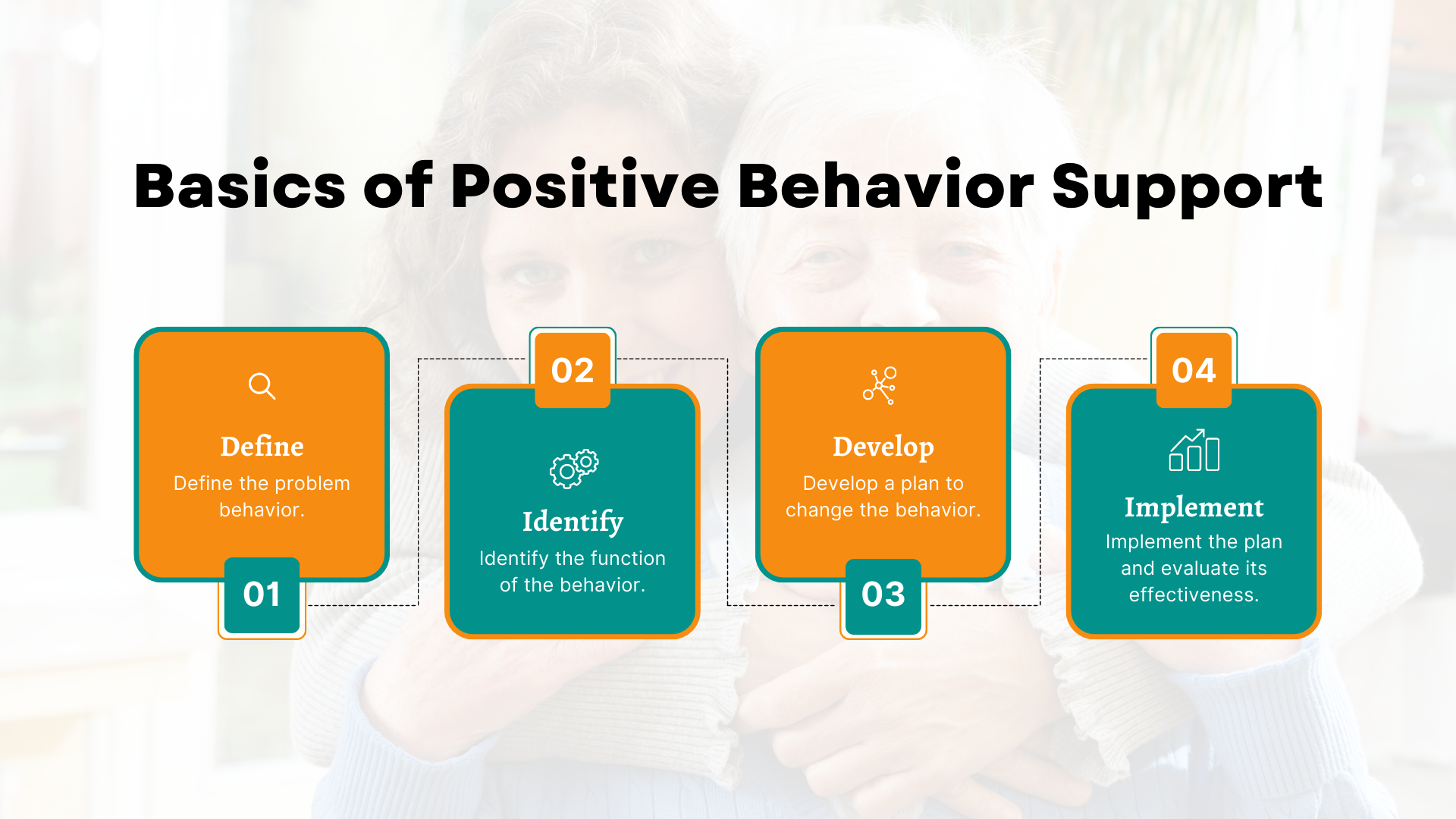A Positive Behavior Support guide for caregivers
If you worked as a Direct Support Professional (DSP) for a while, you most probably have come across a client with challenging behavior, to say the least. We’ve all been there.
Positive behavior support (PBS) is an approach that’s intended to help patients change their behavior. Based on the premise that all behavior has a purpose, and that by understanding the purpose of a person's behavior, it is possible to develop more effective ways of managing it.
PBS is an individualized approach that takes into account the specific needs of each person. It involves developing a thorough understanding of the elder’s behavior and working out what factors are maintaining it, such as: physical, mental, and social. This information is then used to develop a plan to address the behavior, which may involve changes to the individual's environment or routine, as well as teaching them new skills.
Basics of Positive Behavior Support
There are four basic steps to positive behavior support:
Define the problem behavior
Identify the function of the behavior
Develop a plan to change the behavior
Implement the plan and evaluate its effectiveness
It is important to remember that changing behaviors takes time and patience. There are no quick fixes, but with a well-designed plan, change is possible.
PBS is not a one-size-fits-all approach, and it is important to remember that each person is unique. You should be developing this in consultation with the patient, their family, and other professionals who are involved in their care.
Requesting And Responding With Respect
According to DSPs, a simple change that could make a dramatic impact on a patient's behavior is requesting and responding with respect. It gives out a positive response to the patient’s behavior and increases his willingness to comply with the adult caregiver’s request.
When making a request or responding to a patient’s request, it helps to consider the following questions:
Does the patient like to do this activity?
Does he/she know how to do it?
Is he/she already busy with some tasks?
Is he/she having a choice about how or when to do the activity?
Is the DSP asking in a way he would like to be asked himself?
Quality of Life
Quality of life issues are the most important factors that influence the behavior of patients. If the quality of life of a patient is not what it should be, it affects his/her behavior.
The quality of life may be defined as the standard of health, comfort, and happiness experienced by a patient.
The DSP is responsible for making the life quality of patients better and maintaining his/her quality of life high and ensuring they have:
Choice
Relationships
Satisfaction
Regular lifestyles
Rights and responsibilities
Health and wellbeing
The Role of the Local/Federal Governments and Community-Based Services in Caregiving
The local and federal governments play a crucial part in developing new strategies and training to ensure that the patients are living their best life in several ways. One is by providing financial assistance. This could include things like grants or loans to help care providers with the purchase of equipment or training.
Another way is through legislation. The government could pass laws that would make it easier for caregivers to get the support they need, such as by mandating that all workplaces provide paid leave for caregivers.
The government could also offer support in the form of education and training on innovative ways to take care of patients. There are also several online resources that caregivers can access for free, and the government could create more of these or partner with existing programs to make them more available. Finally, the government could provide tax breaks or deductions for caregivers, which would help them financially. All of these measures would go a long way in helping the caregiving industry flourish.
This is an important topic, as the number of people needing care is only going to increase in the coming years. By improving access to resources and training, we can ensure that caregivers can provide excellent care to our family members and even ourselves when the time comes.
If you want to find out more about our available training and information, along with access to previous training materials from past events, sign up for FREE to become a member of Ca Care Association. This way, you can stay updated with the latest skills training and news regarding the Adult and Senior Caregiving Industry in California.


